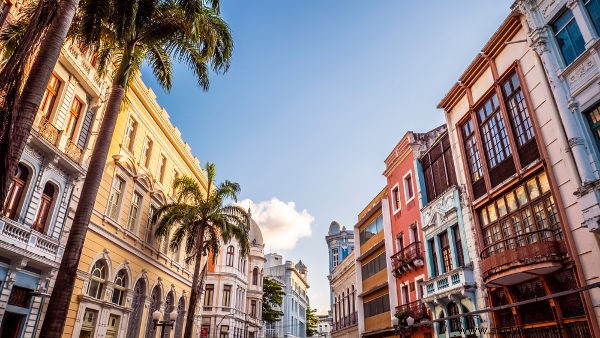The invasions Dutch were the military expeditions organized by the Dutch to occupy the Brazilian Northeast in the first half of the 17th century. The motivation for this invasion is directly related to the Iberian Union and the diplomatic relations of three nations:Portugal, Spain and Holland.
The Dutch conquered the captaincy of Pernambuco , in 1630, and installed a Dutch colony that existed until 1654, when the Portuguese managed to expel the Dutch and retake the region. The highlight of the Dutch colony occurred between the period 1637 to 1643, when Mauritius of Nassau ruled the region.
Login also :Pre-colonial Brazil - first decades of Portuguese presence in America
Historical context of the Dutch invasions
The Dutch invasions in Brazil are directly related to the Iberian Union , an event that began in 1580, when the Portuguese king d. Henrique I died and, as he had no direct heirs to the throne of Portugal, a succession crisis started. Three names claimed the right to the Portuguese throne, one of them being Philip II of Spain, the Spanish king.
Using his military strength, Philip II managed to impose himself and assume the throne of Portugal. So the Spanish king made the two crowns unified . Portugal's possessions then became Spanish possessions. This, in addition to bringing about rearrangements in the diplomatic issues of the two countries, also had a strong influence on Portuguese foreign policy.
At the end of the 16th century, the main economic activity carried out by the Portuguese in Brazil was the sugar production . This activity was developed through Dutch financing and, in addition, the refining of sugar and its distribution in Europe were carried out by the Dutch. There was, therefore, an important economic partnership between Portuguese and Dutch .
But at the end of that century, Dutch and Spanish were fighting the Eighty Years' War . The region of Holland was dominated by the dynasty that reigned in Spain:the Habsburgs . The Dutch set out in search of independence , which would be guaranteed through the expulsion of the Habsburgs from their territory. Within this context, it was natural that the Dutch were expelled from the sugar business, as the Portuguese possessions were under the control of the Spaniards.
Login also :Dutch mercantilism – specific characteristics and practices
What did the Dutch invasions look like

How the Dutch lost their stake in the lucrative sugar business , they decided to mobilize to give an answer to the Spaniards. So in 1595 they attacked and looted Portuguese ports in Africa and in 1604 they attacked the city Savior with the intention of conquering it, but they failed. From 1609, the Dutch signed a truce in the war against the Spaniards and this situation remained until 1621.
This period of truce, however, only served as preparation for the Dutch to take control of the sugar business for themselves. In 1621, the West India Company was founded (West-Indische Compagnie , with acronym WIC, in Dutch), a company whose objective control the slave trade in Africa and the sugar trade in Brazil.
With the end of the truce, the war between Holland and Spain resumed, and the Dutch turned against Brazil. There was a first attack on Salvador , in Bahia, in 1624. The Dutch conquered the capital of Brazil after hours of battle, but they never managed to go beyond the city of Salvador, as the local resistance against the Dutch was strong.
The Dutch stayed in Salvador until mid-1625, when they were expelled because of the reconquest of the Bahian city with the help of 12,000 men sent by the Spaniards. Expelled, the Dutch continued to act against Spain through attacks privateers . In one of them, the city of Salvador was sacked in 1627.
The following year, the Dutch sacked a Spanish fleet, earning a considerable fortune. This money was used to prepare the fleet that attacked Pernambuco in 1630.
-
Invasion of Pernambuco

In 1630, about seven thousand men were sent into a squadron organized by the WIC. The attack was carried out against Olinda , the capital of the province of Pernambuco. On February 14, 1630, the Dutch conquered the city and, shortly thereafter, transferred the capital to Recife, considered a more appropriate place to mount defenses against invaders.
From this feat, the Dutch managed to establish a colony in the Brazilian Northeast and tried to expand it quickly. The period from 1630 to 1637 is precisely the moment when the Dutch managed to take control of territories that extended from Ceará to the banks of the São Francisco River .
The second phase of the Dutch colony is the most expressive and marked the apex of the Dutch presence in Brazil. This phase lasted from 1637 to 1643 and was marked by the presence of João Maurício de Nassau , German military man who was invited by the WIC to be the Governor General of the Dutch colony in Brazil.
Mauricio de Nassau sought to recover the local economy from the reactivation of abandoned mills. These devices were resold to those interested in rebuilding them in the region. In addition, Nassau sought to carry out structural reforms in Recife, building bridges, widening streets, trying to keep the city clean, prohibiting the pollution of tributaries close to the city. Nassau also had a great appreciation for artists and scientists, the result of his humanist training, and he encouraged the coming of several to Brazil.
One of the great problems that affected the Brazilian colony was the high price of food. To get around this, Nassau sought to force all those who owned slaves to plant a certain amount of manioc. This measure was not as successful as expected.
Read more :Exploitation of pau-brasil - first economic activity implemented by the Portuguese
Reconquest
From 1640, the WIC began to face serious financial problems, which shook the financial health of the Dutch colony and damaged Nassau's relationship with the directors of that company. The tightening of the conditions of the Dutch in relation to the loans granted to the owners of local mills created an indisposition between them with the Dutch. This strengthened the circulation of ideas that defended the return of the Portuguese .
From 1640, the Portuguese went through the Restoration , beginning the dynasty of the House of Bragança . The return of the Portuguese to the throne of Portugal also contributed to the propagation of ideas for the reconquest of the Northeast. Portugal ended up starting the preparations, and a war was started from 1645:from the Wars Brasilicas .
The Dutch lost strength because of WIC's financial problems and it worsened even more when Nassau returned to the Netherlands. The Dutch suffered significant defeats in Guararapes, in the battle of 1648 and in the battle of 1649. From 1652, Holland went to war with England and, thus, the few resources that went to the Northeast were reduced even more.
Unable to support and protect itself, the Dutch colony was reconquered by the Portuguese when Recife was besieged and invaded in 1654. The Dutch also lost the squares they had taken from the Portuguese in Africa. .
Image credits
[1] Marcio Jose Bastos Silva / Shutterstock
